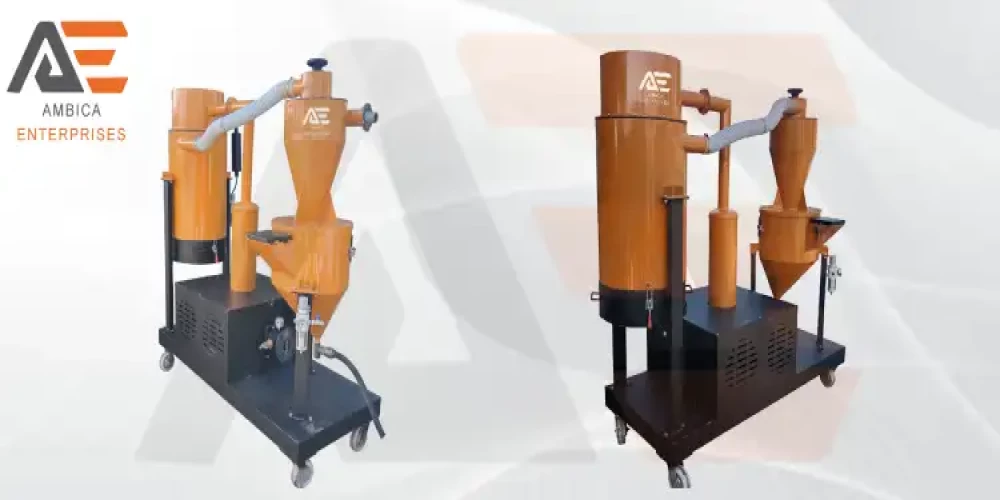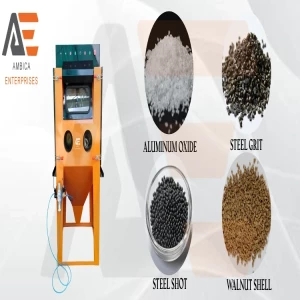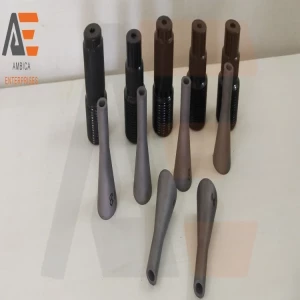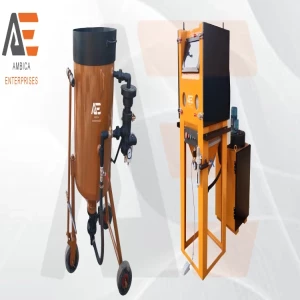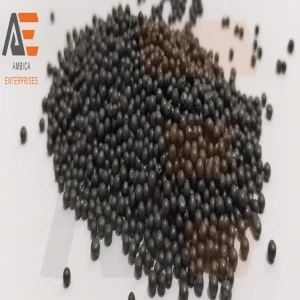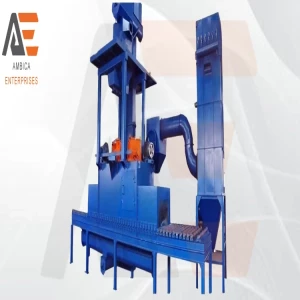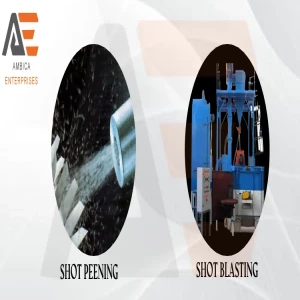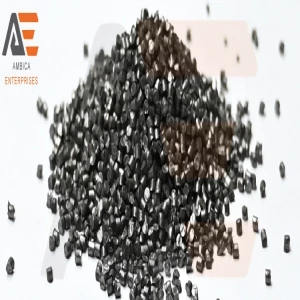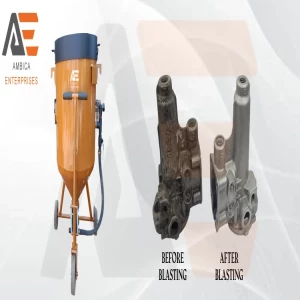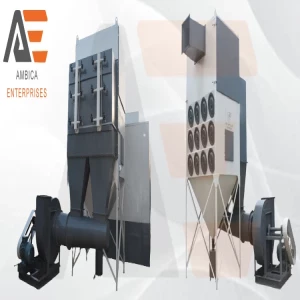A dustless blasting machine is a new eco-friendly way to get paint, rust, and coatings off things. Unlike regular blasting which makes a lot of dust, dustless blasting uses a vacuum pump and water to control the dust. It has a container for the abrasive mix and water. A hose and special nozzle propel the abrasive media like stainless steel shot at the surface. The water reduces dust and makes blasting safer and work better.
This process works in many different industries, like car painting, building, boat fixing, and restoring old things. Dustless blasting is good at cleaning and getting surfaces ready without causing too much harm. It works well on delicate materials and intricate structures. Key benefits of dustless blasting include its minimal effect on the environment, keeping workers safer by reducing exposure to harmful particles, and working quickly.
Types of Dustless Blasting Machines
Different kinds of dustless blasting machines are made for separate surface preparation needs. Two important types are wet blasting machines and vacuum blasting machines:
- Wet Blasting Machine: A wet blasting cabinet works using water. It mixes the abrasive material and water together in a pot to make a wet mixture. This wet mixture is then pushed hard onto the surface being cleaned. Adding water greatly lowers dust in the air, making it better for the environment and safer. Wet blasting does not hurt surfaces as much, making it good for delicate things and complex structures. It keeps surfaces safe. The water in the cleaning mixture helps clean things well. It makes surfaces very clean and ready for use.
- Vacuum Blasting Machine: A vacuum blasting machine works by using air pressure to push abrasive material against a surface, while a vacuum system collects the used abrasive and any contaminants or debris. It combines abrasive blasting with a vacuum to remove the material. The vacuum system makes sure the grinding material, unwanted things, and dust are quickly taken away and saved, leaving the work area clean. Less Harm to the Environment: Gathering and reusing the material that makes things rough, blasting with air suction reduces trash and affects the environment less. The vacuum system in the blasting process keeps visibility clear, making work more accurate and exact.
Both wet blasting machines and vacuum blasting machines help the dustless blasting approach by greatly reducing dust in the air, improving safety, and giving efficient and controlled surface preparation. These technologies offer flexible solutions for industries from automotive and construction to marine upkeep and restoration work.
Key Component of Dustless Blasting Machine
- Blast Pot: The most important part of a vacuum blasting machine is the blast pot or sand blasting hopper. This stores and squeezes the abrasive material before it is pushed onto a surface. The blast pot has a very important job controlling how much abrasive flows out and how hard it is pushed. This lets the blasting be steady and exact.
- Blasting Hose: The blasting hose carries the sandpaper mix that is pushed hard. The way the tube is made and how good it is are important to keep the mix flowing smoothly without getting stuck.
- Blasting Nozzle: The operator holds the nozzle. The nozzle aims the abrasive stream at the surface being prepared. The sand blasting nozzle is made to affects how the abrasive spreads out and moves fast. This impacts how well and carefully the blasting works.
- Vacuum System: Vacuum machines have a special vacuum part. This vacuum part works with the blasting. It collects the used abrasive, dirt, and pieces. A good vacuum system keeps the work area clean. It helps reuse the abrasive material.
- Separator and Filter System: The separator and filter system sorts the abrasive, contaminants, and debris. It separates the reusable abrasive from the waste materials so the abrasive can be used again.
- Dust Collector: The blasting machines use a vacuum to catch dust during blasting. This reverse pulse jet dust collector catches and filters particles in the air. It helps make the workplace safer and healthier. Keeping the dust collector working well is important. It needs to work right to stop dust and do its job well.
- Mobility and Design Features: Many vacuum blasting machines have wheels or are easy to carry. This lets people move the machines around to different job sites and uses. The machines are made to be taken to where they are needed.
Types of Abrasive Used with Dustless Blasting Machine
Dustless blasting machines utilize a variety of abrasives, each chosen based on the specific requirements of the surface preparation task at hand. The selection of the right abrasive is crucial as it directly influences the effectiveness of the blasting process, the quality of the surface finish, and the overall efficiency of the machine. Here are some commonly used abrasives with dustless blasting machines:
- Steel Shots: Steel shots are small, round steel balls. They are tough and stay in shape, making them good for hard surface cleaning jobs. Steel Shot works well at getting rid of rust, flaky metal, and coatings from other materials. People often use them when a rougher method is needed, like when getting industrial machines and tools ready for new paint.
- Glass Beads: Glass beads come from recycled bottles and glass items. This makes them eco-friendly. Glass beads work well at taking off coatings, rust, and junk from surfaces. They gives a nice smooth look. Glass beads are often used when being green matters most.
- Garnet Sand: Garnet sand is a natural mineral. It is hard and long-lasting. Garnet comes in different sizes of pieces. This lets you choose how rough or smooth a surface is. Garnet Sand works well when precision and a very smooth finish are needed. It is often picked for aerospace and car work where the surface must be ready perfectly.
- Aluminum Oxide: Aluminum oxide is a very useful abrasive known for how hard and long-lasting it is. It comes in different sizes of grains, allowing choice based on the surface wanted. This abrasive does well removing coatings, corrosion, and rust. It is often used when a stronger cleaning of the surface is needed, like for industrial maintenance and work on ships.
- Walnut Shells: Walnut shells are good for the environment. They come from nature and break down easily. They are not as hard as some other cleaning materials. This makes them good for delicate things. Walnut shells are often picked for jobs where being gentle is important. Some examples are restoring old buildings and cleaning softer materials.
- Steel Grit: Steel grit is a harder abrasive with excellent durability. It is often chosen for applications requiring a high level of surface roughness. Steel grit is effective in removing tough coatings, corrosion, and rust. It is commonly used in heavy-duty applications such as preparing metal surfaces for repainting or coating.

